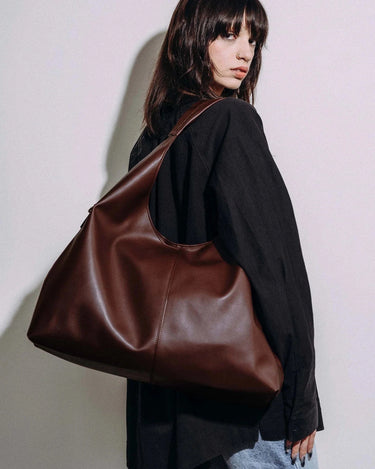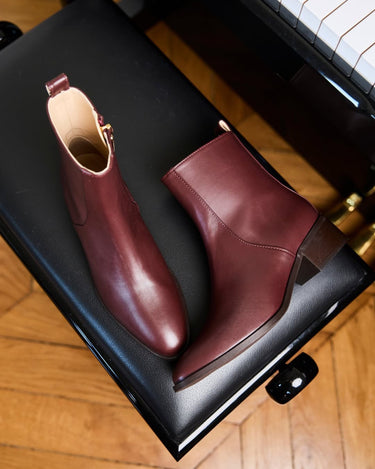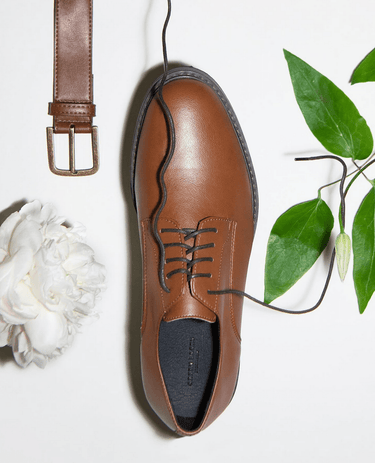Biodegradable Vegan Leather? Meet MIRUM®
Want to know a secret? Here it is: the leather industry is terrified. As plant-based alternatives are gaining ground with designers and consumers, traditional leather is scared of being phased out, which is why it is so quick to attempt to discredit vegan fashion by spreading claims that it's all just “plastic” and bad for the planet. One of its most frequent claims is that vegan leather isn't biodegradable. Well, today there is a new vegan leather on the block that puts those claims to rest: Natural Fiber Welding's MIRUM®.
By Sascha Camilli: writer, speaker, activist, and vegan fashion expert.
In this piece, we will find out the following:
- What does "biodegradable" mean?
- Can vegan leather be biodegradable?
- What is MIRUM® vegan leather?
- Is MIRUM® vegan leather biodegradable?
- What is MIRUM® vegan leather made from?
- Is MIRUM® sustainable?
- Is MIRUM® recyclable?
- Which brands use MIRUM® biodegradable vegan leather?
What does "biodegradable" mean?
Put quite simply, “biodegrading” is just a fancy word for “rotting” – a natural process that goes on with many natural ingredients, from fruit and plants to leather. As soon as the skin is taken off a dead animal, it begins to biodegrade. But as the leather industry wouldn't wish for their products to biodegrade in the wearer's wardrobe, it treats the skins with toxic substances such as aluminium, chromium, and coal-tar derivatives in order to, well, keep it from biodegrading. So animal leather is biodegradable in its natural state, but the very unnatural process of tanning alters this.
Can vegan leather be biodegradable?
When it comes to the biodegradability of vegan leather, it's true that until recently, most vegan leathers were made from petroleum-derived plastics. Today we have plant-based alternatives such as leather made from apples, wine grapes, cactus and cork to name a few. Many of these, however, are at the moment still not biodegradable – to that point it must be said that they are very new on the market and new developments are still being done to make them as sustainable as possible, including exploring options for biodegradability.
But what is even more exciting is that the “is it biodegradable?” question is about to be eliminated thanks to new technology and production processes that contribute to creating plant-based, animal-free solutions that are indeed entirely biodegradable.
What is MIRUM® vegan leather made from?
Created by Natural Fiber Welding, the MIRUM® leather alternative is crafted in a process that completely eliminates any plastic-based ingredients, making it a game changer both when compared to animal skins and traditional vegan leathers. The leather-like material is made of cork, charcoal, coconut husk, soybean oil and natural rubber - all of which are welded and shaped into sheets and pressed onto a natural fabric backer made from GOTS-certified cotton. The “plants, not plastic” ethos adopted by Natural Fiber Welding means that circularity and biodegradability are at the top of the agenda: MIRUM® is in fact made from plant waste, welded together. Its main components are biodegradable polymers and it contains no synthetic binders. Unlike many conventional vegan leathers, it has no polyurethane coating.
Is MIRUM® sustainable? Can it be recycled?
While there isn't a set-in-stone definition of what makes a material sustainable, MIRUM® is 100% natural, bio-based and bio-neutral. MIRUM® plant leather is durable, long-lasting, and fully recyclable. It is the first material of its kind designed to be fully naturally circular: its components can return to the earth as nutrients for future growth at the end of its life. And if all of this were not enough, the material also emits ten times less CO2 than traditional chrome-tanned leather.
 Which brands use biodegradable vegan leather?
Which brands use biodegradable vegan leather?
MIRUM®'s unique qualities are attracting designers such as Immaculate brands SENTIENT and Svala.
Svala told us: "We chose to use MIRUM® in the Svala line as it is a beautiful, durable material that has a very low carbon footprint. MIRUM® is currently the only vegan leather alternative on the market that is USDA certified 100% biobased and does not contain any plastic or synthetics. We have been searching for a plastic-free vegan material that resembles luxury leather for a long time and were unable to find exactly what we were looking for until we discovered MIRUM®. We love that MIRUM® does not require any water during the manufacturing and dyeing process and at the end of its life, it can be recycled into new MIRUM® or ground up and returned safely to the earth."
While for SENTIENT, "MIRUM® truly represents ethical and sustainable innovation for SENTIENT, perfectly aligning to our core values and mission statement. It is a material that shows beyond doubt that science can effectively bring solutions to replace animals in the value chain for fashion brands, and that natural materials can perform ideally, without exploiting and slaughtering sentient non-human animals for their skin. This state of the art material proves that humans have the capacity to build compassionate systems and industries."
Another brand that loves MIRUM® is Melina Bucher. This vegan label's sleek, office-appropriate Bailey bag is the perfect example of how far vegan fashion has come – it would be impossible to even imagine that this upscale accessory is, in fact, made from waste. "I found this company over two years ago,” recalls the brand's founder, eponymous Melina Bucher. “At that time, there was nothing more than small samples of a material and a very strong vision: a material that is 100% bio-based, with only natural inputs. Plants, not plastics. I was immediately smiling, as this was exactly what I was looking for!”
Bucher also reminds that the term 'biodegradable' is a bit fuzzy, depending on location. “The term is defined very different from country to country. In California, biodegradable means it would need to biodegrade to a large degree in ten days (which would not make sense for any textile material). MIRUM® is bio-neutral, meaning that as it only uses natural raw materials, the material will biodegrade in nature without doing any harm to the environment, and putting nutrients back to the nature itself.”
Pioneering MIRUM® in its Bailey design, Bucher says: “We are very proud to be one of the first brands worldwide to have launched a handbag made with MIRUM®. It is the first huge milestone in our journey to become a completely circular brand, and I would love to see more brands following.”
Judging from the direction that the market is currently taking, they most definitely will. MIRUM® and others similar to it represent a notable improvement from current systems – and a big dash of hope for the future.
You can shop the full MIRUM® vegan leather collection at Immaculate Vegan.
Love sustainable vegan leathers? Take a look at our edits for cactus leather, apple leather, grape leather, olive leather, pineapple leather and cork leather.
By Sascha Camilli
About Sascha
Sascha Camilli is a vegan writer, speaker and activist. Her book Vegan Style is out now on Murdoch Books. For more about Sascha, you can read our interview with her or sign up to her newsletter Kind of Wild.
Header image from Melina Bucher
For more great content like this in your inbox, sign up to our newsletter, and save 10% off your next purchase, plus great savings throughout the year.
Related Articles

Vegan Christmas Gifts For Him

Vegan Christmas Gifts For Her



















































































































